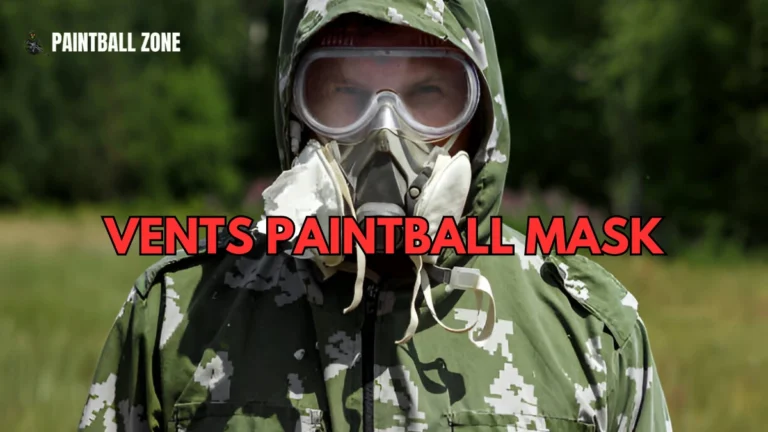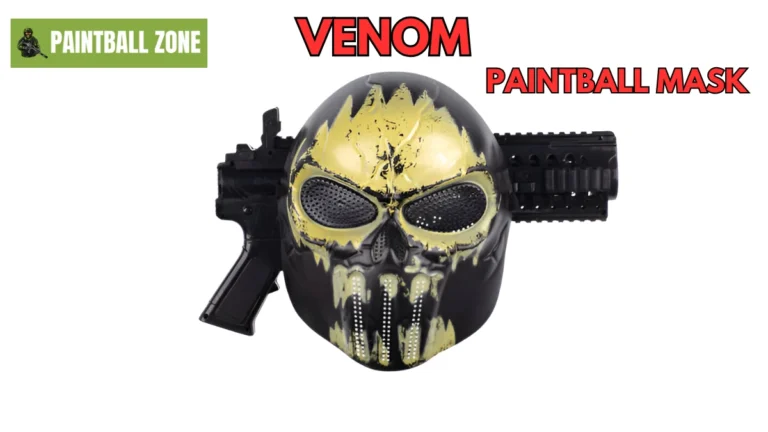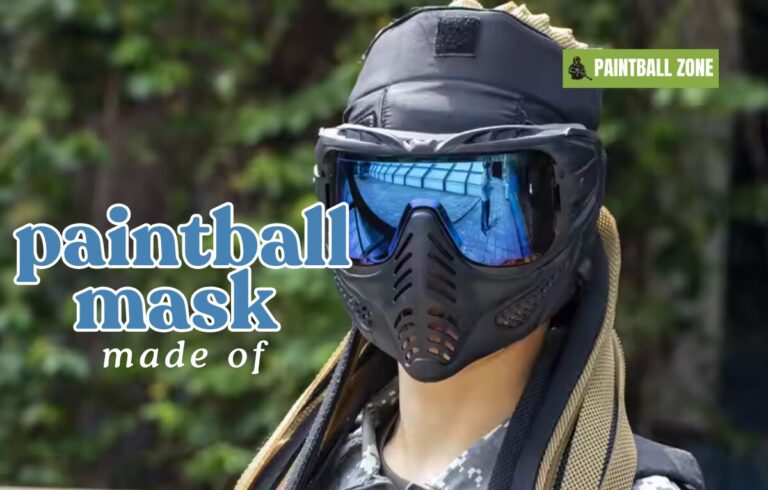Revolutionizing Paintball: The Rise of 3D Printed Paintball Masks
Introduction
Paintball is an adrenaline-pumping sport that demands precision, speed, and the right gear to stay at the top of your game. Over the years, paintball masks have evolved, offering players greater protection and comfort. However, traditional manufacturing methods have often limited innovation. That’s where 3D printing comes in, bringing a whole new level of customization, durability, and design flexibility to paintball masks. In this article, we’ll explore how 3D printing is transforming paintball gear and why it might just be the future of your next mask.
What is 3D Printing and Why Is It Perfect for Paintball Masks?
3D printing, also known as additive manufacturing, involves creating three-dimensional objects by layering materials based on a digital model. In simple terms, it allows designers to create complex shapes and structures that traditional methods can’t achieve easily. For paintball masks, this means the ability to design custom-fit, highly durable, and lightweight gear tailored to the player’s needs.
The precision of 3D printing allows for the creation of masks that fit a player’s head shape perfectly, reducing discomfort during long gaming sessions. Moreover, the technology allows for intricate details, such as improved ventilation systems and custom designs that cater to a player’s aesthetic and performance preferences.
The Benefits of 3D Printed Paintball Masks
Customization and Personalization
One of the standout benefits of 3D printed paintball masks is the ability to create fully personalized designs. Traditional masks are mass-produced and come in standard sizes and shapes. But with 3D printing, players can design masks that fit their unique features, from head shape to preferred color patterns.
For example, players can design masks with specific features like adjustable padding, personalized face shields, and even ventilation holes optimized for their style of play. Customization also allows for creating masks with different levels of face protection depending on personal preference.
Comfort and Fit
Comfort is essential when it comes to paintball gear, especially during long matches. Traditional masks often use standard foam padding and shapes that can cause discomfort or even distraction. With 3D printing, however, masks can be designed to fit the contours of your face and head perfectly. This custom fit minimizes pressure points, making it easier to focus on the game rather than adjusting your mask.
Moreover, 3D printing allows for innovative padding systems that provide superior shock absorption and breathability, enhancing overall comfort during extended use.
Durability and Flexibility
Durability is another significant advantage of 3D printed paintball masks. Traditional masks, while sturdy, can suffer from wear and tear over time. 3D printed masks, on the other hand, use advanced thermoplastics and resins that are highly durable yet flexible enough to withstand impacts from paintballs and collisions with other players.
These materials also allow for greater flexibility in design. For example, masks can have flexible cheek guards that provide additional protection without restricting movement. This flexibility ensures the mask holds up during intense games while providing long-lasting performance.
Lightweight Design
A key feature of 3D printed paintball masks is their lightweight nature. Traditional masks can sometimes feel heavy and bulky, especially during extended games. 3D printing eliminates this issue by creating masks that are lighter and more streamlined without sacrificing strength or durability. This reduction in weight improves mobility and reduces neck strain, which is especially important for fast-paced paintball players who need to be agile.
Key Features of 3D Printed Paintball Masks
Custom Ventilation Systems
One of the common issues with traditional paintball masks is the tendency to fog up during play, especially in humid or hot conditions. With 3D printing, manufacturers can design masks with custom ventilation systems that maximize airflow, preventing fogging and keeping the player cool. These systems can be tailored to a player’s preferences, ensuring optimal breathability throughout the game.
Lens Technology
Another area where 3D printing excels is lens design. Traditional paintball masks use standard lenses, but 3D printing allows for greater customization. For example, players can design lenses with anti-fog coatings or various tints to enhance visibility depending on the field conditions. Custom lens shapes can also be created to offer a broader field of vision, reducing blind spots and increasing situational awareness.
Modular Design
3D printed paintball masks can also be modular, meaning different parts of the mask—such as the lens, face shield, or padding—can be easily replaced or upgraded. This modularity not only helps extend the life of the mask but also allows players to make adjustments based on personal preferences or specific game requirements.
Challenges and Limitations of 3D Printed Paintball Masks
Despite the many advantages, there are some challenges associated with 3D printed paintball masks. One of the primary concerns is the cost. While 3D printing offers incredible customization, it can also be more expensive than traditional mass-produced masks, especially for players just starting out or on a budget.
Material limitations are another factor to consider. While 3D printing technology has come a long way, some materials may not yet offer the same level of strength and impact resistance as traditional manufacturing methods. This is an area of ongoing research and development, and as the technology improves, we can expect to see stronger and more reliable materials used in paintball mask production.
Finally, 3D printed masks must meet safety standards and regulations to ensure they offer proper protection during gameplay. Manufacturers must ensure their masks pass rigorous testing before they can be sold, and some masks may still be working toward full certification.
The Future of 3D Printed Paintball Masks
As 3D printing technology continues to evolve, the future of paintball masks looks promising. We can expect to see even more advanced designs, such as masks with built-in sensors for real-time performance tracking or smart masks that offer enhanced communication features for team coordination. The ability to create fully customized and high-performance gear will undoubtedly change how players approach the game.
Moreover, 3D printing could soon extend beyond masks to other areas of paintball gear, including markers, gloves, and protective pads. As the industry grows, it’s exciting to think about the innovative products that will emerge from this technology.
Real-Life Success Stories
Several companies and independent designers are already pushing the boundaries of 3D printed paintball masks. For instance, some custom mask designers allow players to submit their specifications, creating a truly one-of-a-kind piece of gear tailored to their exact needs. These personalized masks are gaining popularity among competitive players who want an edge in both style and performance.
Player feedback has also been positive, with many praising the comfort, fit, and lightweight nature of 3D printed masks. Some professional players have even begun using these masks during tournaments, citing their superior protection and custom features as key advantages.
Comparison Table: Traditional vs. 3D Printed Paintball Masks
| Feature | Traditional Paintball Masks | 3D Printed Paintball Masks |
| Customization | Limited (Standard sizes & colors) | High (Custom-fit, personalized design) |
| Comfort | Standard padding, can be uncomfortable | Ergonomic design with custom padding |
| Weight | Relatively heavier | Lightweight and streamlined design |
| Durability | Sturdy, but can wear over time | Advanced materials, high durability |
| Ventilation | Basic, can fog up | Custom ventilation systems to reduce fogging |
| Field of Vision | Standard lens size | Custom lenses with wider field of view |
| Modularity | Non-modular | Modular design for easy upgrades |
| Cost | Generally more affordable | Can be more expensive due to customization |
| Material Strength | Strong but fixed | Advanced flexible and durable materials |
| Regulatory Compliance | Meets standard regulations | Must meet specific safety standards |
(FAQs)
1. What materials are used in 3D printed paintball masks?
3D printed paintball masks are typically made from durable thermoplastics like ABS or nylon, or sometimes resins that are both flexible and strong. These materials provide high impact resistance and long-lasting performance, which is crucial in the demanding environment of paintball.
2. Are 3D printed paintball masks safe to use?
Yes, as long as the masks are produced by reputable manufacturers who adhere to industry safety standards. 3D printed masks undergo rigorous testing to ensure they meet safety regulations, including protection against impact from paintballs.
3. How do I design my own 3D printed paintball mask?
Many companies offer design services where you can submit your specifications or use online design tools to customize your mask. Some platforms allow you to choose features like padding, ventilation, and aesthetic elements such as color and logo placement.
4. Are 3D printed paintball masks more expensive than traditional ones?
While the initial cost of a 3D printed paintball mask might be higher due to customization, it can be worth the investment for those seeking a personalized fit and enhanced performance. Additionally, the long-lasting durability and comfort may offer value in the long run.
5. How does 3D printing improve comfort in paintball masks?
3D printing allows for highly customized designs that fit the contours of your face and head. This results in a snug yet comfortable fit, which helps avoid pressure points. Additionally, 3D printed masks can feature ergonomic padding systems and optimal ventilation for cooling.
6. Can 3D printed paintball masks be easily repaired?
Yes, one of the advantages of 3D printed masks is the modular design. You can replace specific parts, such as the lens or face shield, without needing to replace the entire mask. This modularity makes repairs or upgrades easier.
7. How do 3D printed masks compare to traditional masks in terms of durability?
3D printed masks often use advanced materials that can offer superior durability compared to traditional masks. The flexibility of 3D printing allows for designs that are both lightweight and highly resistant to impacts, reducing the risk of damage during intense games.
8. Can I order a fully custom 3D printed paintball mask?
Yes, many manufacturers and independent designers offer fully customizable 3D printed masks. You can choose everything from the shape and fit to the color and design, ensuring the mask is tailored to your exact needs.
9. Do 3D printed masks offer better ventilation than traditional masks?
Yes, 3D printed masks can be designed with custom ventilation systems that allow for optimal airflow. This helps reduce fogging and keeps you cool during intense gameplay, which is a major advantage over traditional masks with basic ventilation.
10. Are 3D printed paintball masks compatible with all paintball gear?
In most cases, yes. 3D printed masks are designed to be compatible with standard paintball gear, including markers and helmets. However, it’s always best to check with the manufacturer for specific compatibility details before purchasing.
Conclusion
3D printed paintball masks are undoubtedly a game-changer in the world of paintball gear. From their customization capabilities to enhanced comfort and durability, they offer numerous benefits that traditional masks simply can’t match. As technology continues to advance, we can expect 3D printing to become an even more integral part of the paintball experience. Whether you’re a casual player or a competitive athlete, the future of paintball gear is looking incredibly exciting.







